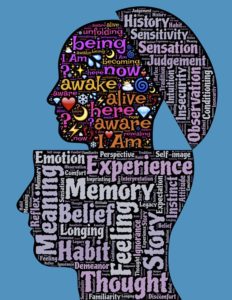
“When asked why people invent, Mark Twain replied, ‘To give birth to an idea–to discover a great thought–an intellectual nugget, right under the dust of a field that many a brain-plow had gone over before. To be the first–that is the idea.’ Indeed, one of the deepest joys in life is to be creative; to put yourself into something innovative and worthwhile, and then to see it come to fruition. But the process of creating can be a roller coaster of highs and lows–ecstasies and despairs–before you experience the rewards.” This excerpt from the book Everyday Greatness introduces the reader to a chapter on vision, followed by two other key ingredients of the art of creating.
A person might ask where vision originates. How does one receive the gift of vision? Is it a talent present at birth or can it be developed? The truth is probably that we all have it to some degree. Envisioning a new bookshelf you might want to build or imagining a space created by eliminating a bookshelf and all the books are both possibilities in today’s world. What I’m talking about, though, is the type of vision that changes the world. Steve Jobs was a man of vision whose ideas helped launch and sustain this amazing age of technology as much as anyone. George R.R. Martin creates universes in such detail as to give life to many kingdoms crowded with a multitude of characters of all kinds. A lot of people have had their imaginations stimulated by his Game of Thrones saga. Astounding is the influence that Oprah Winfrey has had on modern culture, from television to literature and spiritual awakening. She could not have accomplished all she has done without tremendous vision.
More from Stephen R. Covey in his Everyday Greatness. “All things are created twice. All things. Vision is the first creation. For a house it’s called the blueprint. For a life it’s called a mission. For a day it’s called a goal and a plan. For a parent it’s called a belief in the unseen potential of a child. For all, it is the mental creation which always precedes the physical, or second, creation.
“Vision not only helps us spot present opportunities where others might not see them, but it also points us toward the future and inspires us to ask, ‘Where do I want to be five years from now? Ten years from now?’ To answer these questions takes time–it even takes some dreaming.”

George Lucas said, “Dreams are extremely important. You can’t do it unless you can imagine it.”
Dreams, which in this context might better be called aspirations, are intentional or at least hopeful. Imagination is at the heart of creativity. Thus, both are integral components of vision. With these, one begins choosing that elusive reality referred to above as the future. In the arts, a vision of a dance or a musical piece or a figure to be chiseled out of stone gives birth to a physical manifestation where there was but a void. One takes a step into a newly molded objective existence that takes shape because of the seeds of a dream. These can result in works of inspiration. They can bring about greater understanding, even evolution of the human race.
I think of one person who had such an effect on the world around her. The National Susan B. Anthony Museum & House website states, “Susan B. Anthony was born February 15, 1820 in Adams, Massachusetts. She was brought up in a Quaker family with long activist traditions. Early in her life she developed a sense of justice and moral zeal.
“After teaching for fifteen years, she became active in temperance. Because she was a woman, she was not allowed to speak at temperance rallies. This experience, and her acquaintance with Elizabeth Cady Stanton, led her to join the women’s rights movement in 1852. Soon after, she dedicated her life to woman suffrage.
“Ignoring opposition and abuse, Anthony traveled, lectured, and canvassed across the nation for the vote. She also campaigned for the abolition of slavery, the right for women to own their own property and retain their earnings, and she advocated for women’s labor organizations. In 1900, Anthony persuaded the University of Rochester to admit women.”
It’s this kind of vision that can give us hope in times of dissension and despair. There are wrongs that need to be righted, bridges that need to be built and conditions that must be transcended. Stagnant minds are minds that are decaying. Use of our imaginations can be a springboard to greater heights–not in a day or a year perhaps, but with action and persistence over time there will be realization of a dream to uplift all of us.
